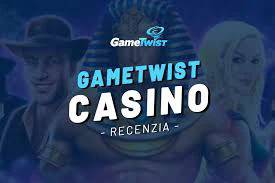# The Origins of Twister: A Game of Connection
Twister, the iconic party game that has you tangled up in laughter and competition, has its roots in the creative minds of the 20th century. With its blend of physicality and strategy, it quickly gained popularity and has since become a staple of gatherings around the world. Let’s take a closer look at the inception and development of this playful phenomenon.

## The Brainchild of Charles Foley
The story of Twister begins with Charles Foley, an inventor and toy designer who was fascinated by the concept of interactive games. In the early 1960s, Foley collaborated with his friend, Neil Rabens, to conceptualize a game that combined elements of skill and chance. Their goal was to create not just a fun game but one that encouraged social interaction.

Foley’s initial idea had a visual element inspired by kids’ games but took a significant turn when he envisioned a game that required players to physically engage with one another. This idea would eventually redefine the conventions of game-playing, prompting players to think beyond traditional board game limitations.
## The Creation of the Game
In 1966, Foley and Rabens completed the design for what would soon be known as Twister. The initial game featured a large, colorful mat with circles representing different colors. The game also included a spinner that dictated which color players needed to touch with their hands and feet.
Foley and Rabens believed that playing this game would create a level of physical engagement that was previously unseen in home games, making it unique. They incorporated elements like awkward body positioning that required players to stretch and bend, unintentionally creating humorous situations and a sense of intimacy among participants.
## The Initial Reception and Marketing
Twister was launched by Milton Bradley Company in 1966. The marketing approach was unconventional; commercials featured celebrities playing the game, which introduced Twister to a wider audience. With famous faces like Johnny Carson endorsing the product, the game swiftly gained traction and entered the pop culture lexicon.
However, the initial reaction was mixed. Some critics viewed it as a game that promoted risqué behavior due to its physical closeness and youthful exuberance, while others saw it simply as a light-hearted way to engage friends and family. Regardless of the debate, Twister soon became a must-have item for parties and gatherings.
## Cultural Impact and Iconic Status
During the late 1960s and early 1970s, Twister rapidly ascended to fame. It was particularly popular during the counterculture movements of the time, aligning with the spirit of freedom and social connection. The game’s ability to break down barriers and promote friendliness made it a go-to choice for college parties, family gatherings, and even corporate team-building exercises.
Moreover, Twister’s inclusion in popular media solidified its status in American culture. From sitcoms to movies, the game became a symbol of fun and social liberation. Its playful nature allowed for improvisation, creativity, and spontaneity, further embedding it into the social fabric of the era.
## The Evolution of Twister
As the years went by, Twister saw several adaptations and reimaginations. New versions emerged, including themed editions based on popular franchises or holidays. Variants of the original game offered ways to change the landscape—such as adding new colors or gameplay mechanics—keeping it fresh for new generations.
Despite these adaptations, the essence of Twister remained unchanged. The core gameplay retained its charm: players competing for space and balance on the colorful mat, leading to unexpected tumbles and bursts of laughter.
## Modern Popularity and Innovations
In recent years, Twister has continued to thrive. The emergence of technology opened new avenues for the game, with virtual versions and mobile apps providing a modern twist. These innovations allow players to engage with Twister in innovative ways, accommodating the fast-paced lifestyles of younger audiences.
Moreover, Twister has been incorporated into fitness regimes and therapy sessions, which utilize its principles of movement, balance, and social bonding. As a game that spans across age groups and cultures, its ongoing relevance and adaptability are testaments to its original design.
## Twister Beyond the Mat
Beyond just a game for fun, Twister has proven to have broader applications. In educational settings, it serves as a tool for teaching color recognition, coordination, and teamwork. Physical therapists have used the game to enhance motor skills and promote physical engagement, showcasing its adaptability in serious contexts.
The game can act as an icebreaker or conversation starter, bridging gaps between individuals who might otherwise remain strangers. This multifunctionality only adds to its allure, making Twister more than a simple game but rather a valuable social tool.
## The Global Influence of Twister
As Twister spread beyond the United States, it adopted various forms and names across countries. In Japan, for instance, the game gained popularity and influenced local games that involved similar movements and interactions. Twister’s worldwide reach is indicative of its universal appeal and ability to resonate with diverse audiences.
Cultural adaptations have allowed Twister to remain relevant, incorporating local themes while preserving its core gameplay. Whether played in a living room in suburban America or during a beach gathering in Brazil, Twister evokes laughter and togetherness universally.
## Conclusion: The Legacy of Twister
The legacy of Twister is one of connection, laughter, and joyful chaos. From its inception by Charles Foley to its status as a modern classic, the game continues to evoke a sense of camaraderie and playfulness.
In a world that often feels divided, Twister serves as a reminder of the simple joys of human interaction, urging us to twist, turn, and entangle ourselves together, literally and figuratively. It is a game that celebrates the beauty of connection, showing that sometimes, the best memories are created when we embrace spontaneity and laughter.
As Twister adapts to the needs of new generations while retaining its charm, the journey of this simple yet profound game continues—a testament to the enduring power of play. Whether you’re an occasional participant or a seasoned Twister champion, the game will always offer an unforgettable experience, reminding us that the joy of connection knows no bounds.
